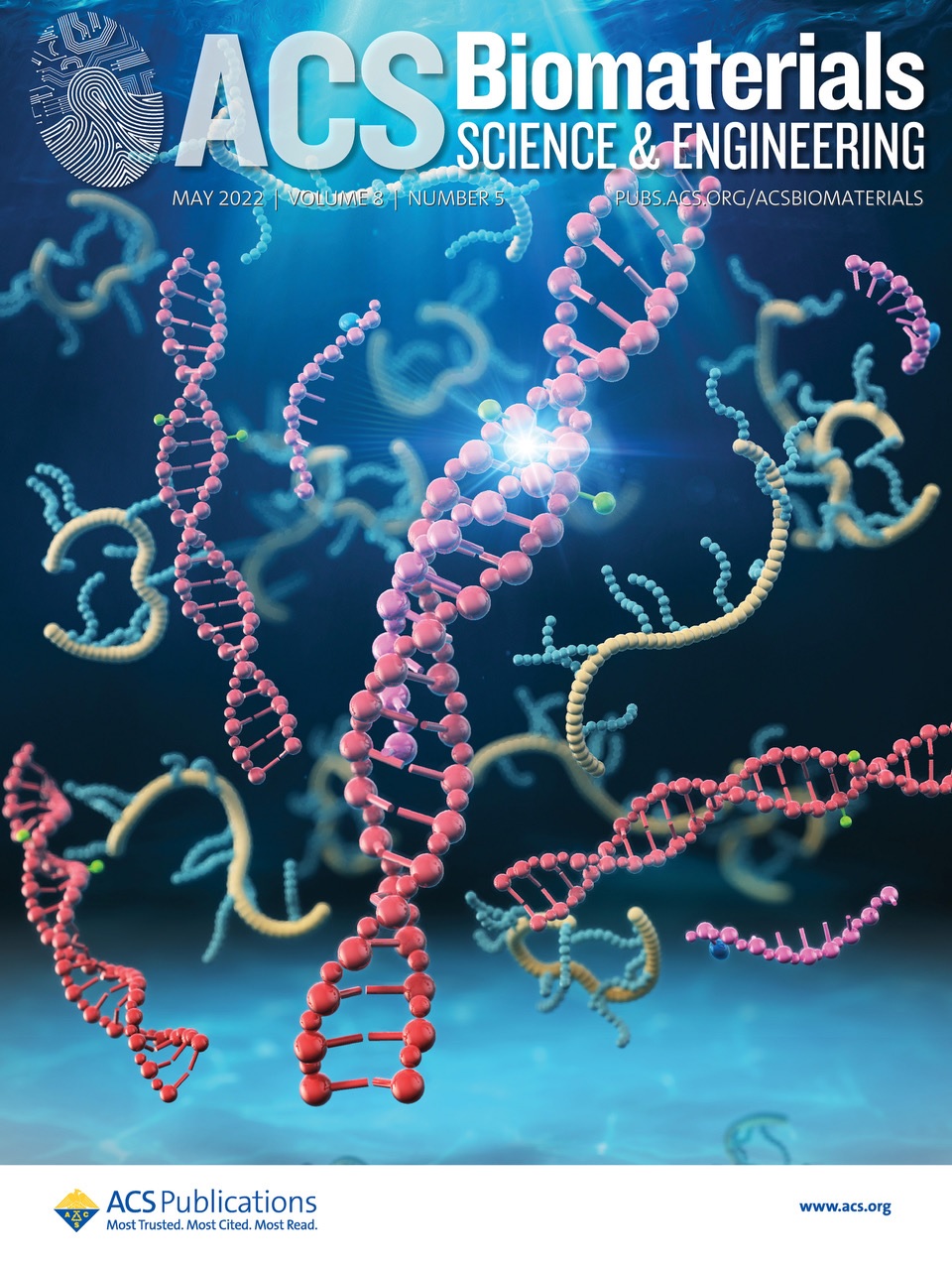Explanation for the Absence of Secondary Peaks in Black Hole Light Curve Autocorrelations
IF 5.4
2区 医学
Q2 MATERIALS SCIENCE, BIOMATERIALS
引用次数: 0
Abstract
The observed radiation from hot gas accreting onto a black hole depends on both the details of the flow and the spacetime geometry. The lensing behavior of a black hole produces a distinctive pattern of autocorrelations within its photon ring that encodes its mass, spin, and inclination. In particular, the time autocorrelation of the light curve is expected to display a series of peaks produced by light echoes of the source, with each peak delayed by the characteristic time lapse between light echoes. However, such peaks are absent from the light curves of observed black holes. Here, we develop an analytical model for such light curves that demonstrates how, even though light echoes always exist in the signal, they do not produce autocorrelation peaks if the characteristic correlation timescale of the source is greater than . We validate our model against simulated light curves of a stochastic accretion model ray traced with a general-relativistic code, and then fit the model to an observed light curve for Sgr . We infer that , providing an explanation for the absence of light echoes in the time autocorrelations of Sgr light curves. Our results highlight the importance for black hole parameter inference of spatially resolving the photon ring via future space-based interferometry.

黑洞光曲线自相关性中没有次峰值的解释
从黑洞吸积的热气体中观测到的辐射取决于气流的细节和时空几何。黑洞的透镜行为会在其光子环中产生一种独特的自相关模式,这种模式会对黑洞的质量、自旋和倾角进行编码。特别是,预计光曲线的时间自相关会显示一系列由光源的光回波产生的峰值,每个峰值都会被光回波之间的特征时间间隔τ延迟。然而,在观测到的黑洞光曲线中却没有这样的峰值。在这里,我们为这种光曲线建立了一个分析模型,证明了即使光回波始终存在于信号中,但如果光源的特征相关时标λ0大于τ,它们也不会产生自相关峰值。我们用一个随机吸积模型的模拟光曲线验证了我们的模型,该模型是用一个广义相对论代码进行光线追踪的,然后将该模型与观测到的Sgr A*光曲线进行拟合。我们推断λ0>τ,为Sgr A*光曲线的时间自相关中没有光回波提供了解释。我们的结果凸显了通过未来的天基干涉测量来空间分辨光子环对黑洞参数推断的重要性。
本文章由计算机程序翻译,如有差异,请以英文原文为准。
求助全文
约1分钟内获得全文
求助全文
来源期刊

ACS Biomaterials Science & Engineering
Materials Science-Biomaterials
CiteScore
10.30
自引率
3.40%
发文量
413
期刊介绍:
ACS Biomaterials Science & Engineering is the leading journal in the field of biomaterials, serving as an international forum for publishing cutting-edge research and innovative ideas on a broad range of topics:
Applications and Health – implantable tissues and devices, prosthesis, health risks, toxicology
Bio-interactions and Bio-compatibility – material-biology interactions, chemical/morphological/structural communication, mechanobiology, signaling and biological responses, immuno-engineering, calcification, coatings, corrosion and degradation of biomaterials and devices, biophysical regulation of cell functions
Characterization, Synthesis, and Modification – new biomaterials, bioinspired and biomimetic approaches to biomaterials, exploiting structural hierarchy and architectural control, combinatorial strategies for biomaterials discovery, genetic biomaterials design, synthetic biology, new composite systems, bionics, polymer synthesis
Controlled Release and Delivery Systems – biomaterial-based drug and gene delivery, bio-responsive delivery of regulatory molecules, pharmaceutical engineering
Healthcare Advances – clinical translation, regulatory issues, patient safety, emerging trends
Imaging and Diagnostics – imaging agents and probes, theranostics, biosensors, monitoring
Manufacturing and Technology – 3D printing, inks, organ-on-a-chip, bioreactor/perfusion systems, microdevices, BioMEMS, optics and electronics interfaces with biomaterials, systems integration
Modeling and Informatics Tools – scaling methods to guide biomaterial design, predictive algorithms for structure-function, biomechanics, integrating bioinformatics with biomaterials discovery, metabolomics in the context of biomaterials
Tissue Engineering and Regenerative Medicine – basic and applied studies, cell therapies, scaffolds, vascularization, bioartificial organs, transplantation and functionality, cellular agriculture
 求助内容:
求助内容: 应助结果提醒方式:
应助结果提醒方式:


